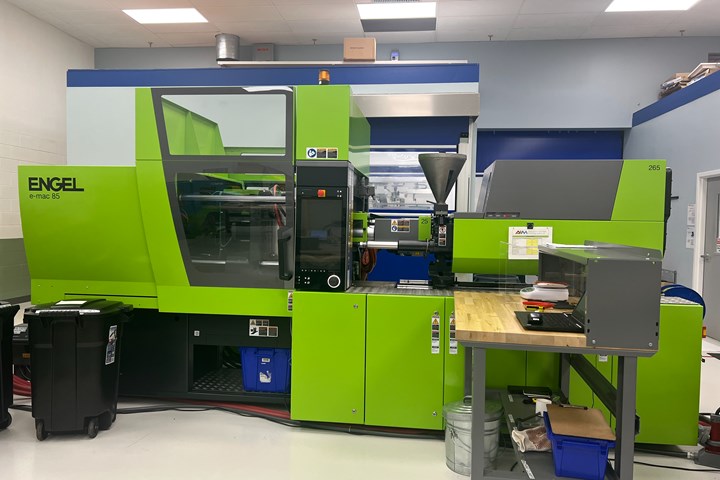The AIM Institute and Engel North America Unveil Partnership
Engel North America has provided an E-mac 265/85 injection molding machine to be used by the AIM Institute for education and R&D purposes.
The American Injection Molding (AIM) Institute has entered into a strategic corporate partnership with Engel North America, which has contributed an injection molding machine to enhance the educational landscape at the AIM Institute's educational lab. The Engel E-mac 265/85 has been brought in to be used in the AIM Institute’s ANSI national accreditation board (ANAB)-accredited Molding 1, Molding 2 and Molding 3 courses, in addition to research and development.
“The AIM Institute is excited to have Engel as a new corporate partner, and we look forward to a long-lasting relationship,” says David Hoffman, AIM Institute director. “Engel went all out on this machine as it comes with their proprietary technology such as E-flomo plus, Autoprotect injection monitoring and the full IQ suite of IQ clamp control, IQ melt control, IQ weight control and IQ hold control. We are anxious to get time on this machine to develop some R&D projects to learn how their control system can improve the injection molding process.”
The partnership focuses on helping to address the skilled labor shortage. “Empowering the next generation in the plastics industry through this strategic partnership with AIM is an investment in education, helping to bridge the skilled labor gap,” says Vanessa Malena, Engel North America president. “Together, we create a future where knowledge and hands-on training shape a workforce ready to innovate and lead in the dynamic world of injection molding.”
Engel says it is aligning with the AIM Institute’s mission to offer premium education and training to industry professionals. The company benefits from the partnership by annually presenting its products. The objective of these corporate partnerships is to collectively address knowledge gaps within the injection molding industry through collaborative initiatives.
Related Content
-
Three Key Decisions for an Optimal Ejection System
When determining the best ejection option for a tool, molders must consider the ejector’s surface area, location and style.
-
Using Data to Pinpoint Cosmetic Defect Causes in Injection Molded Parts
Taking a step back and identifying the root cause of a cosmetic flaw can help molders focus on what corrective actions need to be taken.
-
Process Monitoring or Production Monitoring—Why Not Both?
Molders looking to both monitor an injection molding process effectively and manage production can definitely do both with tools available today, but the question is how best to tackle these twin challenges.






